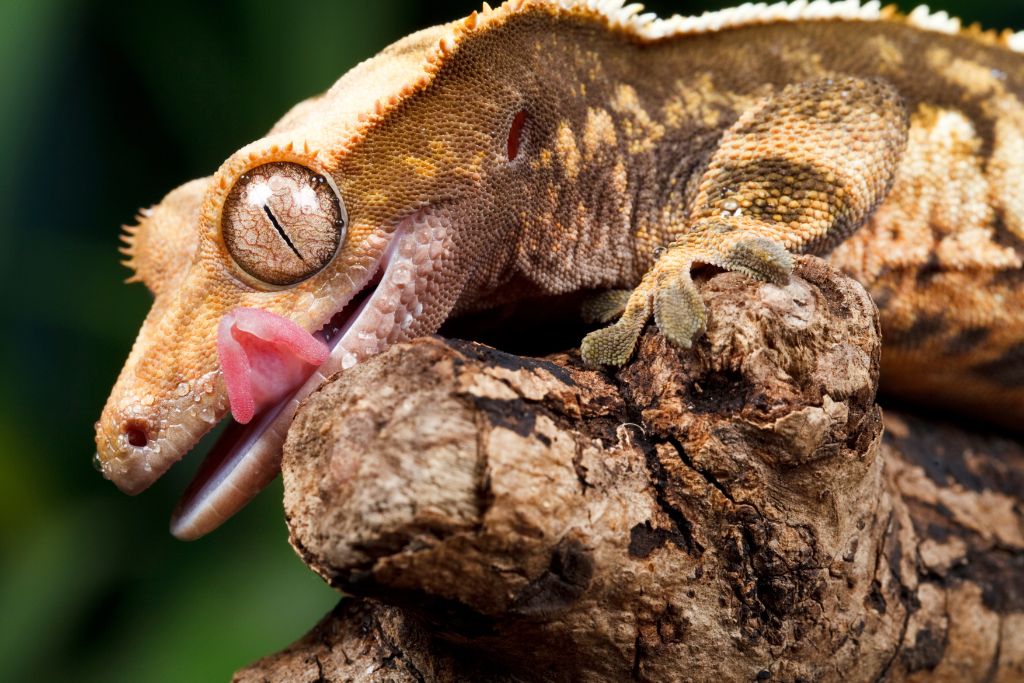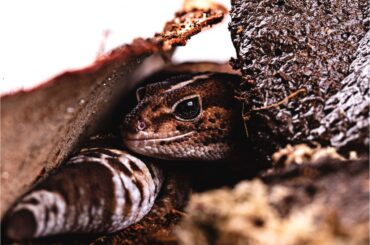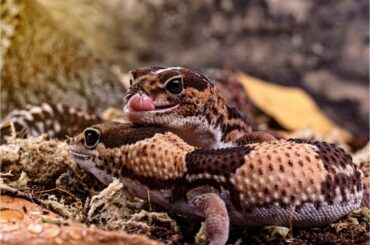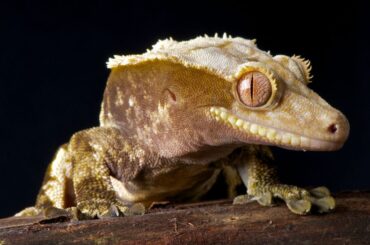Have you ever wondered how often your crested gecko sheds its skin?
Crested geckos make fantastic pets, especially for those new to reptile care. These little creatures are ground-dwellers by nature and are generally easygoing. They don’t demand much—just a cozy habitat, a balanced diet, and love from you. Their low-maintenance lifestyle makes them a hit among pet owners.
Shedding is a natural and essential process for crested geckos, but can bring challenges. As a responsible owner, understanding the shedding cycle and how to assist your gecko during this time is crucial.
Crested Gecko Shedding Basics
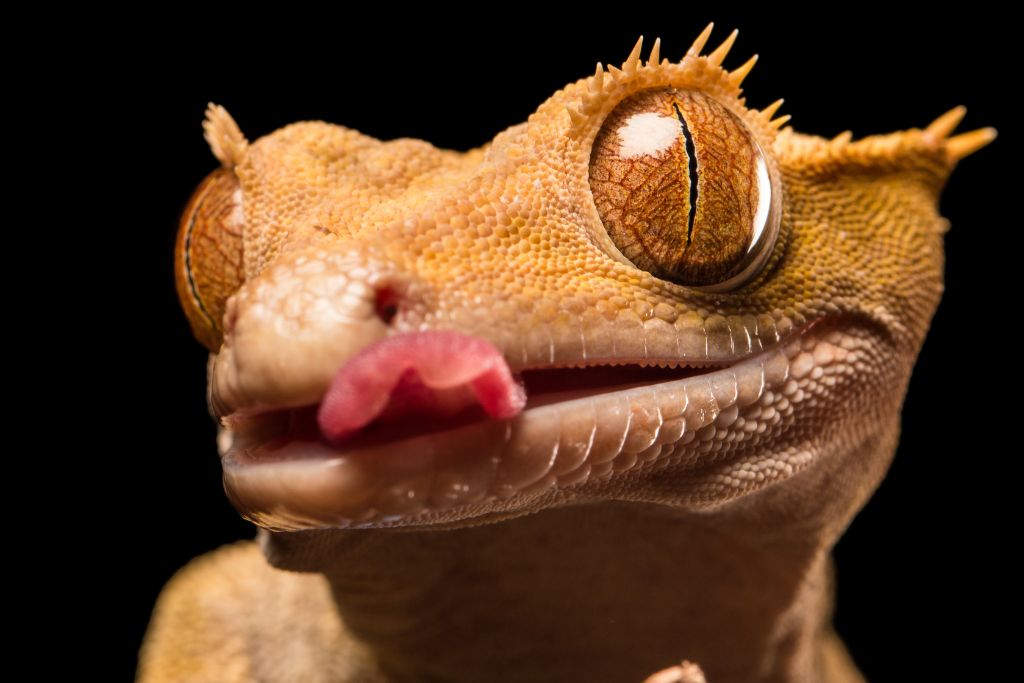
Crested geckos, like other reptiles, undergo a metamorphosis when they shed. They’re getting rid of old, worn-out skin. This makes room for fresh, new skin to take its place. Shedding also helps in healing any minor wounds or scratches. It’s a way for these critters to stay healthy and look their best.
Young geckos shed more often than adults. Why? Because they’re growing fast! Each time they shed, they’re making space for their expanding bodies. Think of it like outgrowing your old clothes and needing new ones that fit better. When they shed, they don’t only get new skin; it’s also about keeping up with a growing body.
When Do Crested Geckos Shed
Before a crested gecko sheds, its body prepares for the big event. It starts by making a special fluid that goes between the old skin and the new one. This fluid acts like a natural lubricant, making it easier for the aging skin to slide off. You can think of it as the gecko’s way of prepping for a smooth transition.
You’ll notice some changes in your gecko as shedding time approaches. The skin starts to look dull and may even get a bit cloudy. It’s like the gecko is wearing a layer of old, faded clothes.
Don’t be surprised if you see your gecko biting at its old skin during the shedding process. They do this to help peel it off. It’s a bit like pulling off a Band-Aid, but it’s a whole-body experience for them.
Common Myths About Crested Gecko Shedding
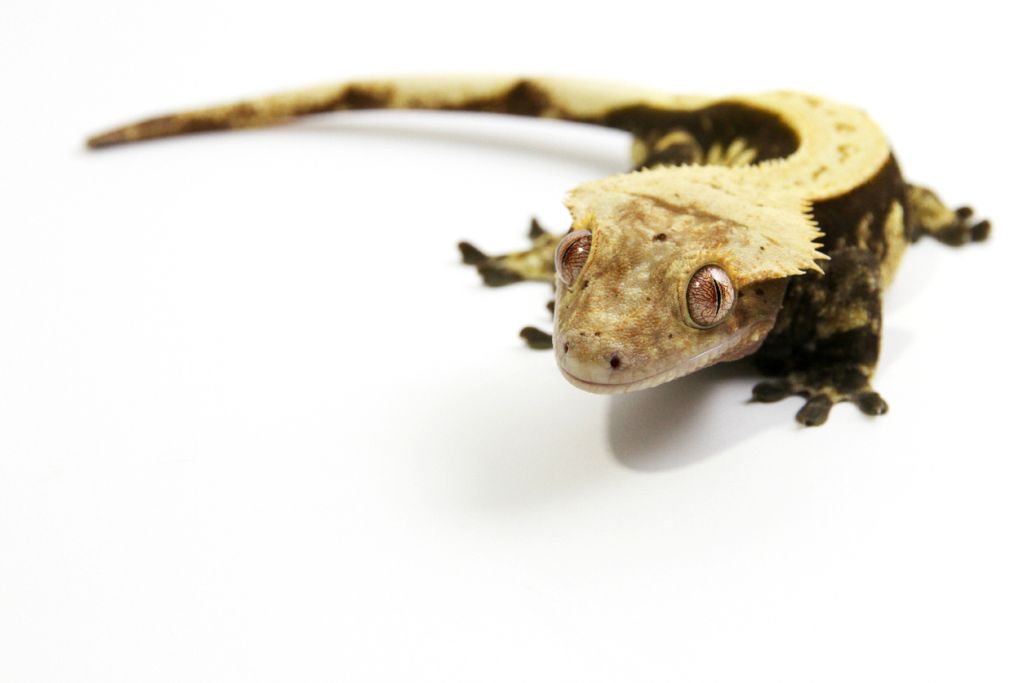
There’s a lot of misinformation floating around when it comes to crested gecko shedding. One popular myth is that shedding is a sign of illness. In reality, shedding is a natural and healthy process all crested geckos undergo.
Another misconception is that you should never help your gecko shed by removing leftover skin. While you should be cautious, gently removing stuck skin can prevent infections.
Some people also believe that shedding happens overnight. Although it might seem quick, the process can take several days, especially if the gecko is stressed or unwell.
Finally, there’s the myth that shedding geckos should be left entirely alone. While it’s essential to reduce stress, they still need basic care, like fresh water and a clean habitat.
Creating the Ideal Habitat for Shedding
A comfortable, well-designed habitat can make the shedding process much easier for your crested gecko. First, consider humidity. A humid environment helps to loosen the old skin, making it easier for your gecko to shed. You can maintain humidity by misting the habitat regularly or using a humidifier.
Substrate matters, too. Opt for something that retains moisture but isn’t too wet, like coconut fiber or sphagnum moss. This will help maintain the proper humidity levels. Make sure also to provide plenty of hiding spots—geckos like to have a secluded place to shed, away from prying eyes.
Lighting is another factor to consider. Dimmer lighting can help reduce stress during this sensitive time. Don’t go completely dark, as your gecko still needs a regular day-night cycle.
Attention to these habitat details will create an environment where your crested gecko can shed comfortably and successfully.
How Often Do Geckos Shed
You’ll see some telltale signs when your crested gecko is gearing up to shed. The most obvious one is a change in skin color. The vibrant hues your gecko usually sports will fade, giving way to a dull, almost grayish tone. This is the old skin getting ready to peel away.
Your gecko’s behavior will also shift. Ordinarily active and curious, it might start to act more reserved. You’ll often find it hiding in its favorite spots, avoiding light and activity. This is a way for the gecko to reduce stress and focus on the shedding process.
Appetite changes are another clue. Your gecko might eat less than usual. Don’t worry; this is normal. The body is focusing its energy on shedding, not digestion.
Lastly, you might notice your gecko scratching or rubbing against objects in its habitat. This helps to loosen the old skin and is a clear sign that shedding is imminent.
By recognizing these signs, you can take steps to make the shedding process easier. This includes misting your gecko to help loosen the skin, providing a stress-free environment, and ensuring fresh water is always available. Being proactive when you see these signs will help ensure a successful shedding cycle for your crested gecko.
What to Do When Your Gecko is Shedding
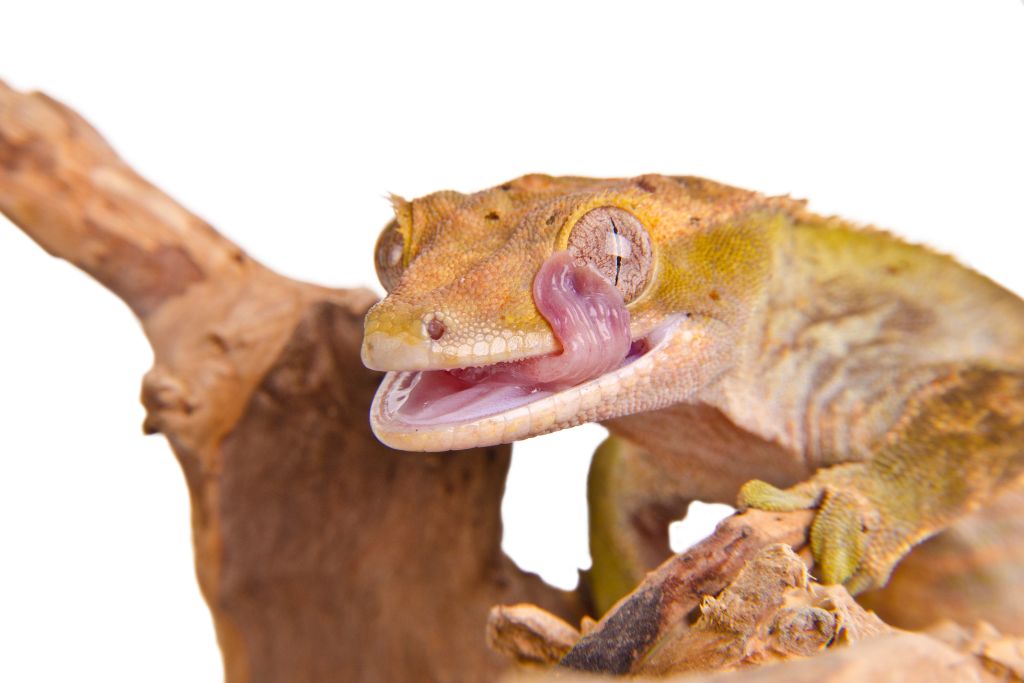
You’ve noticed your crested gecko is about to shed. Here’s what you can do to help:
- Check for Leftover Skin: Sometimes, bits of old skin can stick around. Make sure to remove any lingering pieces to prevent infections gently.
- Hydrate: Shedding can be a tiring process. Offer fresh water to help your gecko rehydrate.
- Clean the Habitat: Old skin can clutter the living space. A quick cleanup will make your gecko more comfortable.
- Limit Stress: Try to keep the environment calm. Too much activity or noise can stress out your gecko.
- Inspect for Issues: After shedding, look for any signs of skin problems or wounds that might need attention.
Shedding Issues and Solutions
Shedding usually goes smoothly, but sometimes things can go sideways. You may have noticed patches of old skin that won’t come off, or perhaps your gecko seems stressed. Don’t panic; these issues are common and often easy to fix. Let’s dive into some common shedding problems and how to solve them.
- Stuck Skin: If old skin doesn’t come off, try misting your gecko with water to help loosen it.
- Eye Issues: Sometimes, skin can get stuck around the eyes. Use a moist cotton swab to remove it gently.
- Tail Problems: Old skin can constrict the tail. If you notice this, carefully remove the skin to prevent circulation issues.
- Stress: A stressed gecko may have trouble shedding. Keep the environment calm and quiet to help them relax.
- Infections: Leftover skin can lead to ailments. If you see red or swollen areas, consult a vet.
Conclusion
Shedding is more than just a quirky reptile behavior; it’s a vital part of a crested gecko’s life. Shedding serves multiple purposes, from making room for new skin to accommodating a growing body.
Whether it’s helping to remove stuck skin or keeping the habitat clean, your actions matter. A little effort on your part can go a long way in ensuring your crested gecko stays healthy and happy through each shedding cycle.
FAQs
Do Crested Geckos Eat Their Shed?
Yes, they often eat their shedded skin. It’s a way to reclaim nutrients.
How to Help a Gecko Shed?
Mist the gecko with water and keep the habitat clean. Make sure to remove any leftover skin.
What to Do When My Crested Gecko is Shedding?
Offer fresh water, keep the environment calm, and check for any leftover skin needing removal.

